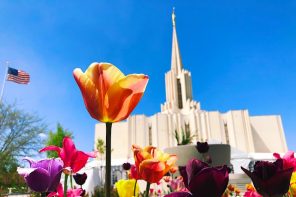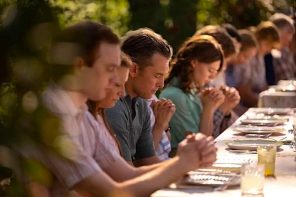I was moved to tears this week when I learned about Alyssa Peterson, a devout 27 year-old Mormon woman from Flagstaff, Arizona, who killed herself on September 15, 2003, just 25 days after arriving in Tal Afar, Iraq, to serve as a counter-intelligence interrogator.
(Alyssa is featured in a campaign by the National Religious Campaign Against Torture, covered here at RD last week.)
Peterson, who grew up in Flagstaff, Arizona and served a Mormon mission in the Netherlands, joined the Army as an Arabic language specialist.
Two days after she arrived at the Tal Afar air base prison, Peterson’s unit was ordered to apply “enhanced interrogation techniques” she considered inhumane and torturous.
Alyssa said she couldn’t do it. She couldn’t be two people. She couldn’t be herself—a devout Mormon, a person of faith—while implementing torture.
She was officially reprimanded for showing “empathy” to Iraqi detainees and reassigned to another unit. Days later, she shot herself with her service rifle.
Every Mormon should know the story of Alyssa Peterson because her story affirms that our tradition has the power to inspire its members to “dare to be different,” as the familiar Mormon slogan goes: to hold to our principles even when it is difficult or unpopular.
And every Mormon should know the story of Alyssa Peterson because she exemplifies a powerful departure from the familiar Mormon take on human rights, nationalism, and morality.
The Church of Jesus Christ of Latter-day Saints stresses to members the importance of respecting established governments and laws of the nations where they live. American Mormons have traditionally been an especially nationalistic group, stressing our loyalty to the United States government even at times in our history when that government has failed to protect our lives and our interests.
Some observers have suggested that these emphases on nationalism, unquestioning obedience, and respect for hierarchy have made Mormons an ideal fit for government agencies like the CIA.
(Indeed, in some Latin American countries, the Church has been perceived as a CIA front, a perception that has brought harm to the Church and ended the lives of Mormon missionaries. From 1984 to 1990, leftist guerillas attacked 193 Mormon chapels in Chile. A total of five Mormon missionaries—two American, three Peruvian—were killed by leftist guerillas in South America in 1989, 1990, and 1991.)
The globalization of the Church brings new pressures to our concept of who we Mormons are and what constitutes moral and humane behavior in the contemporary world.
We are now a religious tradition that is home not only to Russell Pearce, the author of Arizona’s immigration law SB 1070, but also to Anglo and Latino Mormon activists opposing the law on human rights grounds.
Our Mormon tradition has produced Jay Bybee—a lifelong Mormon and returned Mormon missionary who served in Chile during the Pinochet coup—who supervised and signed the 2002 “Torture Memos” effectively authorizing the United States’s shameful use of “enhanced interrogation techniques” in Iraq.
It has also produced Alyssa Peterson—a lifelong Mormon and returned Mormon missionary—who refused on principle to administer these very “enhanced interrogation techniques.”
Who will Mormons be in our global 21st century? Will we identify more strongly with institutional power and national identity or with individual conscience? And could it be that a robust internal discussion about human rights is on the Mormon horizon? I hope so.




